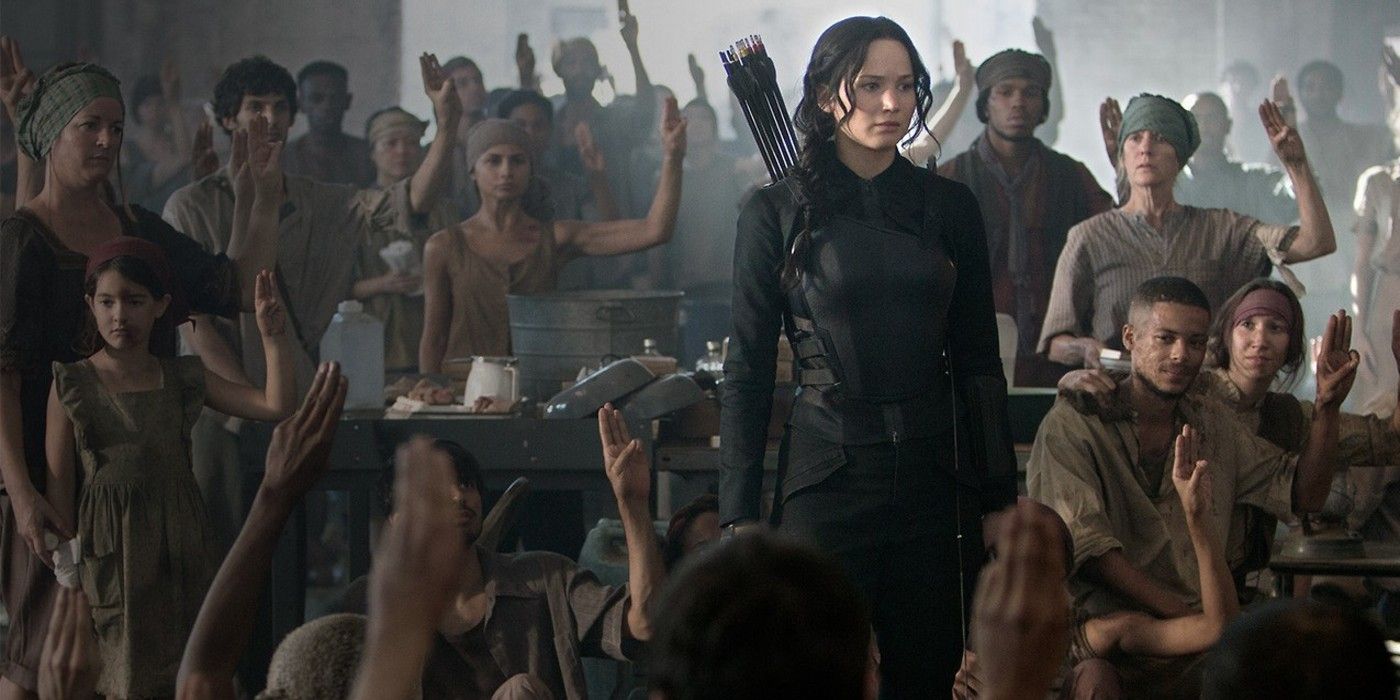Here's the meaning behind The Hunger Games franchise's title and the name of the annual event held by the Capitol. The sadistic event was at the center of Suzanne Collins YA book trilogy, which was then adapted into a four-film series with Jennifer Lawrence playing the lead role of Katniss Everdeen. Katniss, a citizen from District 12, participated in two Hunger Games before leading a rebellion that brought about the end of the event once and for all.
Following the end of the First Rebellion by the districts of Panem, the tyrannical Capitol put the Treaty of Treason into effect. In turn, the Hunger Games event was founded as a reminder of the consequences brought by the districts' participation in the rebellion. Every year, one male and one female from each of the 12 districts were picked through a lottery system. The 24 tributes between the ages of 12 and 18 were then forced to fight to the death until a lone survivor emerged. For the majority of the Games, the event was televised as a form of entertainment for the Capitol as the rest of Panem watched in horror.
The title of the brutal event was symbolic of how the Capitol controlled the rest of the nation. Whereas the Capitol citizens were well fed and lived a life of luxury, the rest of the Panem constantly dealt with hunger and the threat of starvation. Many of the districts had to rely on their own methods for food. Katniss became skilled in hunting to keep her own family alive. The government controlled the amount of food that was made available in each location, which was why District 1 and 2 had a better supply. Considering the victor was awarded food rations and prizes for their respective district, there was an even more literal meaning behind the Hunger Games. Those who were already suffering through starvation had to use that as motivation to survive not only for themselves. but also the well-being of their district.
By the time the events of The Hunger Games started, 74 years had passed since the first event. Katniss made note of the abundance of food that was readily available to Capitol citizens. Coriolanus Snow, the president at the time, made it a point to show off the Capitol's luxuries while the tributes prepared for the 74th Hunger Games. It was all about food and entertainment to the richest of citizens. Whereas the districts didn't easily forget that meaning behind the Games, most of the Capitol seemed to lose sight of the symbolism.
Even during the 74th Hunger Games, the Gamemakers implemented ways to remind tributes about what they were fighting for. In Katniss' first battle to the death, there was a giant Cornucopia which housed supplies and weapons that could assist the tributes. Another version of the structure was included in the following year's Quarter Quell. The Cornucopia was present in other years and served as yet another symbolic reflection of the Capitol's control of food and survival. But that dominance soon came to an end following the Second Rebellion.


